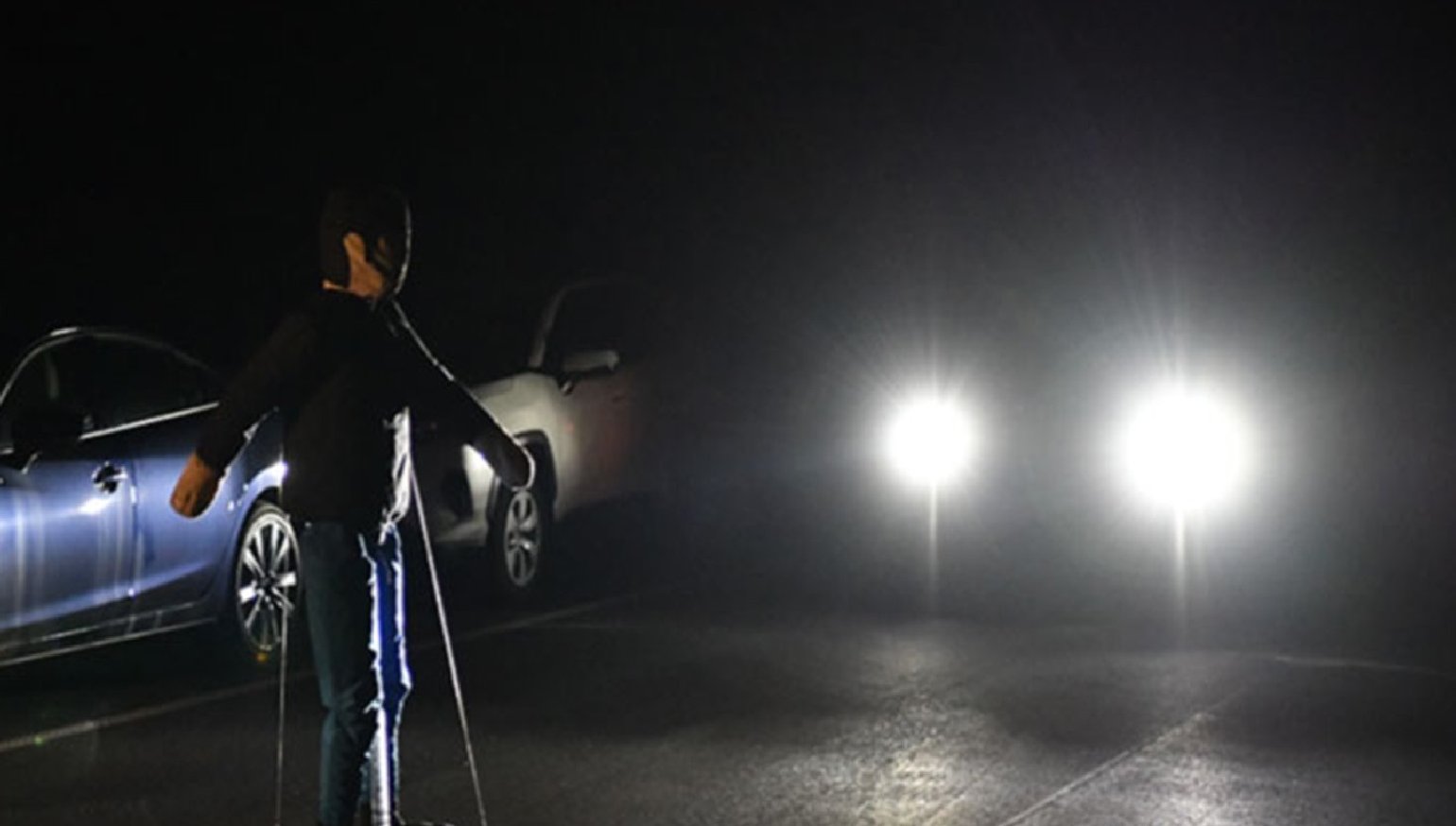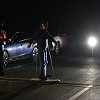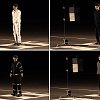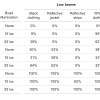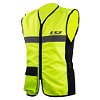Logic says that wearing clothing that increases your visibility when it's dark outside will make you safer.
That logic generally holds true. There’s just one catch. The automatic emergency braking (AEB) systems so often found on modern automobiles don’t register highly reflective clothing the same way the human eye does. That’s according to a recent study conducted by the Insurance Institute for Highway Safety (IIHS), and it could have consequences for motorcyclists.
Background check
For those unfamiliar with the latest crash-avoidance tech in cars, AEB notifies drivers when they’re at risk of a collision. If the user fails to take action, the system intervenes by automatically applying the brakes. Such driving aids rely on cameras (in some cases, both cameras and radar) to identify potential collisions with pedestrians. For that reason, many AEB systems perform worse as night falls.
In 2022, IIHS Vice President of Research Jessica Cicchino released a report on AEB nighttime performance. She examined 1,500 police-reported crashes that involved 2017 to 2020 model-year vehicles. Her findings revealed that AEB reduces the odds of a pedestrian crash by 32% in the daylight. In artificially lit areas, the odds were lowered by 33% at dawn, dusk, and nighttime.
However, Cicchino also found there “was no difference in the odds of a nighttime pedestrian crash for vehicles with and without” automatic emergency braking when there was no artificial illumination. That conclusion laid the groundwork for IIHS’s latest study.

New Findings
Logic says, “If AEB systems perform worse under low-lighting conditions, clothing with hi-viz colors, such as florescent yellow, and strips of reflective material should help. Right?” Apparently, it's not that simple.
To test that theory, IIHS researchers conducted a series of nighttime trials including a Honda CR-V, Mazda CX-5, and Subaru Forester (all 2023 models). Each automobile ran the course at 25 mph before an adult-sized dummy crossed its path at a perpendicular angle. The runs were performed with no roadway lighting, 10 lux of illumination, and 20 lux of illumination (the federal recommendation for crosswalks).
For the testing, the team clothed the dummy in an all-white sweatsuit, an all-black sweatsuit, a black sweatsuit with reflective strips along the arms and legs, and black sweatpants paired with a reflective jacket. The results were just as disparate as they were concerning.

Both the Honda and Mazda performed poorly. The CR-V struck the dummy 84% of the time while the CX-5 hit the “pedestrian” on 88% of its runs. When the dummy donned the sweatsuit lined with reflective strips and the fully reflective jacket, the Honda didn’t reduce its speed at all. The Mazda replicated those results for the former but reduced its speed by more than half when encountering the latter. Still, both vehicles collided with those particular test dummies under all lighting conditions.
The Subaru’s results paint a very different picture. In all tests but one, the Forester decelerated to a full stop without striking the pedestrian dummy. During the vehicle’s only failed run, the dummy wore the suit lined in reflective strips with 10 lux of light illuminating the crosswalk. It slowed by 82% before the impact, though. Unfortunately, not all cars on the road are Subaru Foresters. That’s why the study’s findings should concern most people, including motorcyclists.

What to wear?
In the end, the IIHS study only muddies the already murky waters because there are several issues motorcyclists have to consider when applying this new information to the question of what to wear.
First, the IIHS study only included dummies functioning as pedestrians, not mounted on motorcycles. The optimistic might argue that a bike’s mass and lighting (headlamp, taillight, etc.) stand a better chance of triggering AEB systems. At the same time, that hasn't always been the case with Tesla’s camera-based driving aids.

Second, the IIHS study didn't test how AEB reacts to hi-viz colors, like the florescent yellow found on many vests and jackets. It just found that reflective strips can confuse some automated systems. Of course in many cases it's the hi-viz motorcycle gear that also includes some reflectivity.
A third consideration is that both hi-viz colors and reflectivity can still have huge safety benefits if they help a human driver see you at night and that driver then brakes, so you're not relying on AEB to save you.
So while the IIHS study provides additional information, it stops well short of telling us all that motorcyclists need to know on this topic.
What is clear is that advanced driving assistance systems (ADAS) still have blind spots and we have to consider that motorcycles can fall within those blind spots. Hopefully, more research adds more clarity to the situation, but more importantly, automotive manufacturers need to address the issues identified by the latest findings.




